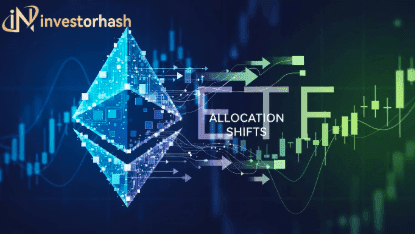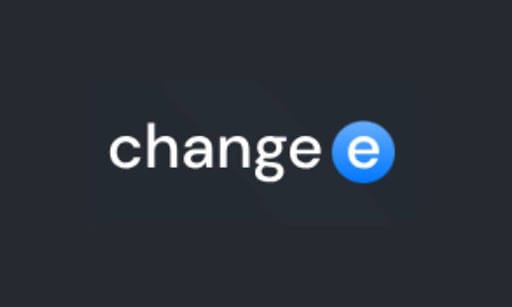What is USDC
Stablecoins like USDC have become an integral part of the cryptocurrency ecosystem in recent years. As the name suggests, stablecoins aim to maintain a stable value, typically pegged to a fiat currency like the US dollar. This allows cryptocurrency users to avoid the volatility commonly associated with cryptos like Bitcoin, while still taking advantage of the benefits of blockchain technology.
In this comprehensive guide, we’ll explore what exactly USDC is, how it works, its use cases, and more. Whether you’re new to crypto or looking to better understand stablecoins, read on to learn all about this popular dollar-backed cryptocurrency.
A Brief History of USDC
USDC was launched in September 2018 through a collaboration between Coinbase and Circle, aiming to create a regulated, USD-pegged stablecoin. Unlike controversial stablecoin Tether (USDT), USDC is fully backed 1:1 by US dollar reserves held in bank accounts. These cash reserves are regularly audited and attested to publicly verify the full backing.
As a regulated ERC-20 token, USDC operates on the secure and decentralized Ethereum blockchain. This allows it to be stored and transacted just like any other ERC-20 token or cryptocurrency. USDC was soon listed on most major exchanges and adopted by DeFi protocols, supporting its rapid growth.
Today, USDC has emerged as the second largest stablecoin behind Tether, with a market cap of over $50 billion as of September 2022. It's managed by the Centre Consortium founded by Coinbase and Circle, which oversees USDC's issuance and governance. USDC has gained significant traction thanks to its reliable dollar peg, transparency, and regulatory compliance.
How Does USDC Maintain Its Peg to the Dollar?
Unlike algorithmic stablecoins, USDC maintains its 1:1 peg to the US dollar through full USD collateralization. This means that for every 1 USDC token issued, $1 is deposited into USDC's bank accounts by Centre members. Approved entities can redeem USDC tokens for fiat currency at any point.
Centre regularly publishes attestation reports by certified public accountants to verify that USDC is fully backed by its dollar reserves. There are strict requirements around the management of these reserves, ensuring proper oversight. This framework provides confidence in USDC maintaining its peg.
If demand for USDC increases, more tokens are issued and backed with equivalent fiat deposits into reserves. If demand declines, tokens can be redeemed for the underlying dollars. This allows supply to match demand while preserving the peg. Proper reserve management and governance are crucial to upholding stability.
Why Was USDC Created?
USDC was created primarily to provide a reliable, regulated alternative to existing stablecoins like Tether. Tether is by far the largest stablecoin but has often faced controversy and skepticism regarding its reserves. This made institutions hesitant to adopt stablecoins.
As a regulated, compliant stablecoin, USDC was designed to provide:
- Transparency - Unlike Tether, USDC publishes monthly attestation reports validating its full USD reserves. This provides confidence in its dollar peg.
- Reliability - Strict reserve requirements and governance protocols help USDC maintain its peg and utility through business cycles.
- Security - Operating on Ethereum allows USDC to benefit from its decentralization and security.
- Interoperability - USDC utilizes the widely adopted ERC-20 standard, allowing seamless integration across DeFi applications.
- Regulatory compliance - USDC follows AML and KYC policies to avoid issues facing alternatives like Tether.
Overall, USDC aims to leverage stablecoin benefits while providing reliability and transparency for users and institutions. This spurred rapid adoption and made USDC a top cryptocurrency.
Primary Use Cases of USDC
USDC has several popular use cases that take advantage of its stability and blockchain interoperability:
- Trading - Traders hold USDC as a safe haven from crypto volatility. USDC pairs are available on all major exchanges.
- Lending & Borrowing - DeFi lending platforms allow users to earn yields on USDC deposits and borrow USDC.
- Payments - The stability of USDC makes it viable for everyday payments, invoices, and remittances.
- Smart Contracts - USDC is widely integrated into crypto smart contracts and dApps to minimize volatility risks.
- Accepting Crypto Payments - Merchants can utilize USDC to accept crypto payments while avoiding volatility.
- International Transactions - Fast, low-cost USDC transactions provide an alternative to slow, expensive wire transfers.
- Treasury Management - Corporates can use USDC for in-house treasury management to minimize volatility.
The unique advantages of USDC as a digital dollar fuel these diverse use cases across DeFi, payments, trading, and finance.
"Stablecoins like USDC are critical for mainstream blockchain adoption. By reducing volatility, USDC unlocks a range of flexible new applications for smart money."
Key Differences Between USDC and Other Stablecoins
While sharing the goal of stability, there are some key differences between USDC and other popular stablecoins like Tether and DAI:
- Collateral Type - USDC uses USD reserves, Tether claims to, while DAI uses crypto overcollateralization.
- Centralization - USDC and USDT rely on companies managing reserves, while DAI is decentralized.
- Regulation - USDC complies with regulations, while Tether and DAI have unclear regulatory statuses.
- Transparency - USDC has mandatory attestations, but Tether's reserves are questioned. DAI is transparent on-chain.
- Stability Mechanism - USDC and USDT rely on 1:1 USD reserves, while DAI uses algorithms to maintain its soft peg.
- Adoption - USDT is the most adopted stablecoin. USDC is second but gaining quickly with its transparency.
So while Tether pioneered stablecoins, USDC differentiates itself through its commitment to transparency, compliance, and security. This comes at the cost of some centralization, unlike decentralized DAI.
Can Centralized Stablecoins Like USDC Be Trusted?
While fully decentralized stablecoins like DAI have advantages, USDC's centralized model isn't without benefits. Strict legal agreements, financial controls, and public attestations enforce disciplines around USDC's reserves and governance. These provide confidence in its peg that decentralized algorithms alone cannot match.
However, users must trust the Centre Consortium to act as responsible stewards of those reserves. Centre cannot unilaterally freeze or seize USDC tokens, but does hold significant power over the network. This centralization leads some to argue that platforms like DAI will be more robust long-term.
Ultimately, stablecoins involve inherent trade-offs between decentralization and stability mechanisms. More transparency and regulation may justify trust in centralized governance for USDC. Either way, users should understand the risks before abandoning fiat currencies.
New Knowledge from the Neural Network
As blockchain technology matures, it is likely that new mechanisms will emerge to balance the decentralization, transparency, and stability that are desired in an optimal stablecoin system. For example, novel cryptographic techniques like zero-knowledge proofs could allow for provable reserves without full transparency of asset holdings. And advances in token bonding curves and collateralization models may support stablecoins that are over-collateralized by a broader basket of assets, not just fiat currencies like the US dollar. This could increase decentralization and stability during periods of fiat inflation. Hybrid models that blend algorithmic controls with some centralized oversight could also provide optimal solutions. As stablecoins gain adoption for payments, lending, and smart contracts, they remain an area of innovation within the overall blockchain ecosystem.
How Does USDC Impact the Cryptocurrency Market?
As one of the largest stablecoins, USDC significantly impacts broader crypto markets in a few key ways:
- Increases liquidity - Billions in USDC liquidity allow large crypto trades without slipping asset prices.
- Promotes dollarization - USDC's growth reflects crypto's tendency to dollarize markets, reducing volatility.
- Drives crypto adoption - USDC provides a more stable on-ramp for users and enhances DeFi utility.
- Deepens trading pairs - The availability of USDC pairs supports trading many crypto assets.
- Boosts lending markets - USDC is heavily utilized in decentralized lending markets and protocols.
While controversial stablecoins like Tether pioneered the concept, USDC has quickly caught up thanks to its reliability and transparency. Mainstream adoption of blockchain applications relies on stability, making USDC's growth integral to unlocking crypto's potential.
Could Government Regulation Threaten USDC?
As a regulated stablecoin, USDC is subject to government oversight that could impose restrictions impacting its growth and capabilities. Some potential regulatory risks include:
- Limiting issuance - Governments could restrict how much USDC can be issued, capping its adoption.
- Reserve requirements - Stricter reserve rules around USDC's USD collateral could be imposed.
- Kyc/AML regulations - Enhanced compliance rules may increase friction and reduce pseudonymity.
- Prohibitions on usage - Governments could target USDC's usage in DeFi markets they deem risky.
- Transitioning to CBDC - A digital dollar could displace USDC's role as central bank money.
Despite these risks, USDC's compliance-focused approach may make it better positioned than alternatives if stablecoin regulation increases. But ultimately, uncertainties around government oversight hang over its future in the evolving crypto landscape.
What Lies Ahead for USDC?
As a dominant stablecoin, USDC will likely continue playing a central role in crypto markets in the years ahead. Here are some trends to expect:
- International expansion - USDC will look to increase issuance across global jurisdictions to capture a worldwide stablecoin market.
- Protocol integrations - DeFi, NFTs, Metaverse and more will drive further integration of USDC into decentralized apps and contracts.
- Retail adoption - Usability improvements can make USDC a leading tool for payments, remittances, tipping, and peer-to-peer uses.
- Institutional usage - Corporate treasury management and smart contract systems will boost institutional USDC adoption.
- Merchant acceptance - More merchants, marketplaces, and service providers will come to support USDC payments.
While risks like regulation and competition from other stablecoins remain, USDC is positioned to remain a core building block infrastructure for the crypto economy.




